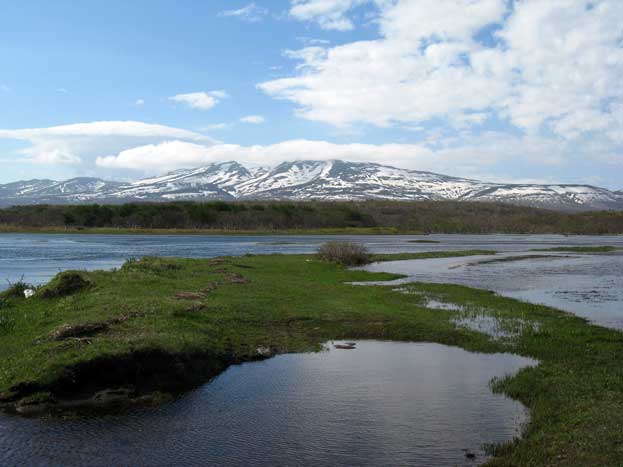Uvs Nuur is the northernmost of the enclosed basins of Central Asia. It is enclosed on the north (Tuva) by the Tannu Ola Range and the Sangilen Mountains in the north-east. The main feeder to Uvs Nuur is the Tes-Khem River, which has its source in a fresh-water lake, Sangyn Dalai Nuur, in the alpine meadows and larch forests of the Sangilen uplands at the eastern extremity of the basin (in Mongolia). The Tes-Khem then flows 500 km westwards, through steppe and desert, into southern Tuva, and then back into Mongolia, before emptying into Uvs Nuur. For its last 100 km, the river meanders through an extensive wetland complex, a green swathe in an otherwise semi-desert landscape; its delta is some 40 km wide and is an important wildlife habitat.

Continent: Asia
Country: Russian Federation, Mongolia
Category: Natural
Criterion: (IX)(X)
Date of Inscription: 2003
Uvs is the 'sea' of western Mongolia
Uvs is relatively shallow (10-20 m depth) and very saline and alkaline. In all, the lakes display a range of hydrological characteristics, water quality and biomass productivity. Uvs is the 'sea' of western Mongolia; it is frequented by a range of seabirds, even though the nearest ocean is 3,000 km away.The Uvs Nuur basin has an extraordinary temperature range; the lowest winter temperature in western Mongolia (-58 °C) has been recorded here but summer temperatures can rise to 40 °C. Within the site there are nine strictly protected areas, representing the main ecosystems. Two of the Mongolian protected areas, Turgen Uul and Tsagaan Shuvuut, also lie in the western mountains, which have shown the presence of 173 bird and 41 mammal species within their boundaries. Both are important habitats for the endangered snow leopard and there is active research into the conservation of this species.
 |
| Uvs Nuur Basin |
Browse Gallery Plus UNESCO Storyline
Other important mammals are large herbivores such as the Asiatic ibex, argali mountain sheep, wild boar, red deer and musk deer and the Mongolian and black-tailed gazelle; predators include wolf, red fox, lynx, polecat and weasel, and many different kites, falcons, eagles and vultures. Within the ecologically-diverse Uvs Nuur site, some 359 bird species have been recorded.
The vegetation also reflects the conjunction of the Siberian and Central Asian floras, with 19 species endemic to Tuva and Mongolia, 51 relict species and 94 plant species classified as rare.
The Uvs Nuur basin has a rich historical and cultural heritage. The site has also important for cultural heritage status; largely on the basis of 2,900 sites containing burial mounds (kurgans) and stone tablets (steles), many of late Palaeolithic age. Historically, a large proportion of the Eurasian steppe would have undergone a vegetation succession to forest as the post-glacial climate became warmer - had wild herbivores and humans not worked to maintain the grassland environment.
There is a close relationship between the domesticated grazing animals (traditionally sheep, cattle, goats and horses) and the grassland plants of the steppes, a relationship which has moulded this landscape over thousands of years. The increasing domestication is livestock supplemented (and supplanted) the wild grazing animals of the steppe - such as Przewalski's horse, the Saiga antelope and the wild Bactrian camel. Over the millennia, the nomadic seasonal herding patterns transferred plants and nutrients spatially within the steppe ecosystems.
Some grasses and herbs will have been eliminated; others will have thrived. Soil organic matter gradually accumulated as plant leaf litter, dead roots and animal excreta were decomposed and their constituent nutrients recycled back into new plant growth.











No comments:
Post a Comment